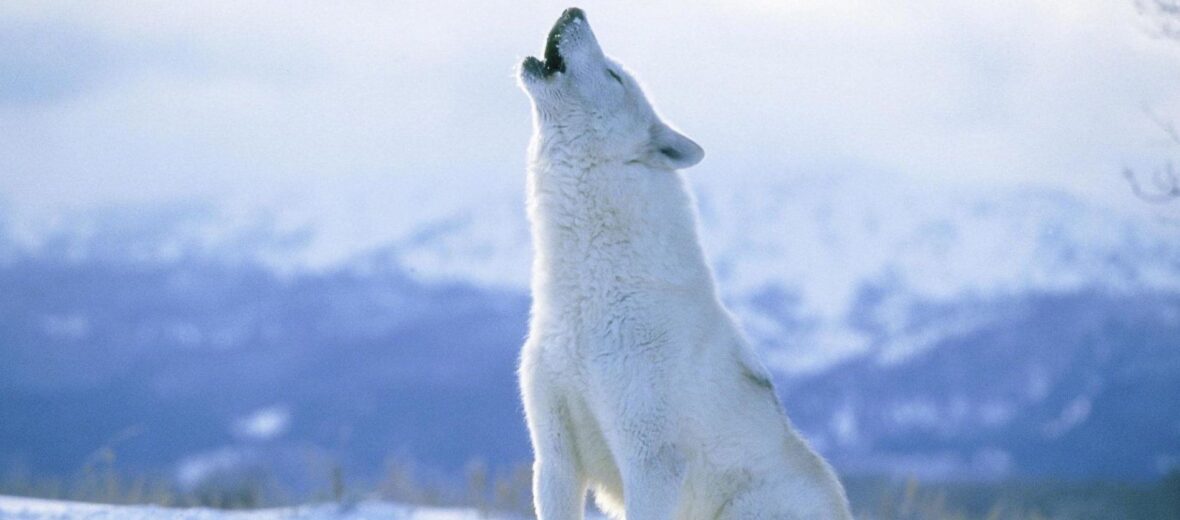
The Arctic wolf lives in some of the most unfavorable regions in the world, where temperatures seldom reach above -22° F and the ground is also permanently frozen! Like the Arctic hare and Arctic fox, they are one of the few species of mammals able to tolerate these insane conditions. Typically smaller than gray wolves, and with smaller ears, & slightly shorter muzzles, with shorter legs to reduce exposure to the frigid air, the Arctic wolf lives alone or in packs of up to 6 wolves. They can be found around the northern edge of the North American continent and on to the North Pole, as well as along the eastern and northern shores of Greenland. These wolves are listed as Least Concern by the IUCN.
First the Stats…
Scientific name: Canis lupus arctos
Weight: Up to 180 lbs.
Length: Up to 6.6 feet
Height: Up to 2.7 feet, at the shoulder
Lifespan: Up to 20 years
Now on to the Facts!
1.) Arctic wolves have an extra thick fur coat with the inner part of their coat being waterproof.
2.) Their primary prey items include: caribou, musk oxen, ptarmigan, Arctic foxes, lemmings, seals, nesting birds, and Arctic hares.
3.) The only known predators of these beautiful wolves are: polar bears, other wolves, and humans.
4.) Low temperatures aside, the Arctic wolf tolerates complete darkness which lasts 5 months out of the year!
5.) These wolves have in excess of 42 sharp teeth that are used to tear flesh from bone.
But wait, there’s more on the Arctic wolf!
6.) They can eat up to 20 lbs. of food in a single meal! Like my kids.
7.) Males will use urine and scent marking to denote their territories. Again, like my kids.
Did you know…?
The Arctic wolf can run at speeds of up to 40 mph! They can maintain this speed for a decent amount of time too.
8.) All members of the pack take turns protecting the kill from other animals.
9.) Only the dominant male and female are be allowed to mate. This is the case with all wolves.
10.) Females give birth to 2 – 3 pups each breeding season.
Now a Short Arctic Wolf Video!
Also, check out the Critter Science YouTube channel. Videos added frequently!
Want to suggest a critter for me to write about? Let me know here.



